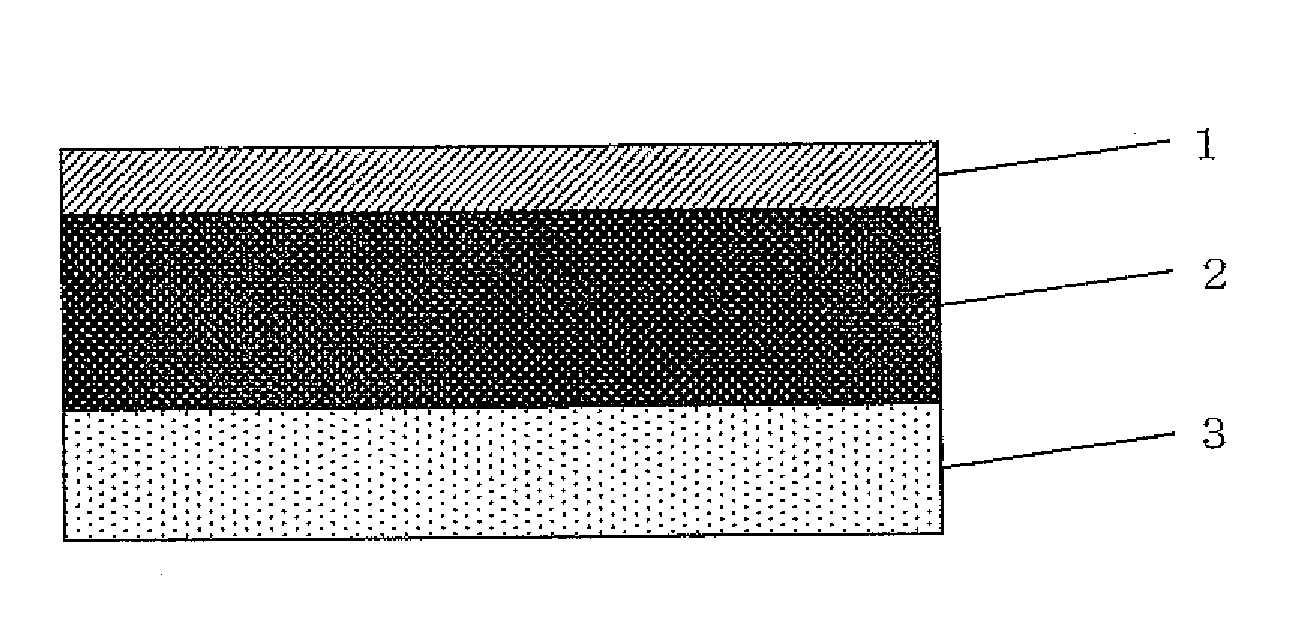Coating agent composition for battery electrodes or separator
a technology of coating agent and battery electrode, which is applied in the direction of batteries, cell components, cell component details, etc., can solve the problems of unsatisfactory charge/discharge cycle life and high internal resistance of lithium-ion secondary batteries, poor charge/discharge characteristics, and human damage to electric devices having lithium-ion secondary batteries mounted thereon. , to achieve the effect of reducing the resistance to ionic conduction, preventing deterioration of battery characteristics, and satisfying protection functions
- Summary
- Abstract
- Description
- Claims
- Application Information
AI Technical Summary
Benefits of technology
Problems solved by technology
Method used
Image
Examples
example 1
Production of Vinyl Alcohol Copolymer 1
[0215]Into a reaction vessel equipped with a reflux condenser, a dropping funnel, and a stirrer were charged 100 parts of vinyl acetate, 300 parts of methanol, and 16 parts of 3,4-diacetoxy-1-butene, and azobisisobutyronitrile in an amount of 0.255 mol % (based on the mole of the charged vinyl acetate) was added to the resultant mixture and the temperature of the mixture was increased under a nitrogen gas stream while stirring to initiate a polymerization. After 45 minutes from the initiation of polymerization, 99 parts of vinyl acetate and 144 parts of 3,4-diacetoxy-1-butene were dropwise added to the mixture over 9 hours. After completion of the addition, the polymerization was further conducted for 75 minutes, and then m-dinitrobenzene was added to the reaction mixture to terminate the polymerization. At the time of the termination of polymerization, the rate of polymerization of vinyl acetate was 88%. Subsequently, the unreacted vinyl aceta...
example 2
[0231]In Example 2, a method is described in which a lithium-ion secondary battery is produced using an electrode having a negative electrode coated with the coating agent composition for battery electrode or separator.
[0232](Production of Vinyl Alcohol Copolymer 2)
[0233]Into a reaction vessel equipped with a reflux condenser, a dropping funnel, and a stirrer were charged 68.0 parts of vinyl acetate, 23.8 parts of methanol, and 8.2 parts of 3,4-diacetoxy-1-butene, and azobisisobutyronitrile in an amount of 0.3 mol % (based on the mole of the charged vinyl acetate) was added to the resultant mixture and the temperature of the mixture was increased under a nitrogen gas stream while stirring to initiate a polymerization. At a point in time when the rate of polymerization of vinyl acetate became 90%, m-dinitrobenzene was added to the reaction mixture to terminate the polymerization. Subsequently, the unreacted vinyl acetate monomer was removed from the polymerization system by a method ...
example 3
Preparation of a Coating Agent Composition
[0247]0.5 kg of alumina particles (NanoTek Al2O331 nm, manufactured by C. I. Kasei Co., Ltd.) were added to 1.5 kg of the coating agent composition in Example 1 and dispersed using a propeller mixer until the resultant mixture became uniform, and then further dispersed using a bead mill to obtain a coating agent composition.
[0248](Production of a Lithium-Ion Secondary Battery)
[0249]A lithium-ion secondary battery was produced by substantially the same method as in Example 1 except that the above-obtained coating agent composition was used.
PUM
| Property | Measurement | Unit |
|---|---|---|
| mol % | aaaaa | aaaaa |
| boiling point | aaaaa | aaaaa |
| temperature | aaaaa | aaaaa |
Abstract
Description
Claims
Application Information
 Login to View More
Login to View More - R&D
- Intellectual Property
- Life Sciences
- Materials
- Tech Scout
- Unparalleled Data Quality
- Higher Quality Content
- 60% Fewer Hallucinations
Browse by: Latest US Patents, China's latest patents, Technical Efficacy Thesaurus, Application Domain, Technology Topic, Popular Technical Reports.
© 2025 PatSnap. All rights reserved.Legal|Privacy policy|Modern Slavery Act Transparency Statement|Sitemap|About US| Contact US: help@patsnap.com



